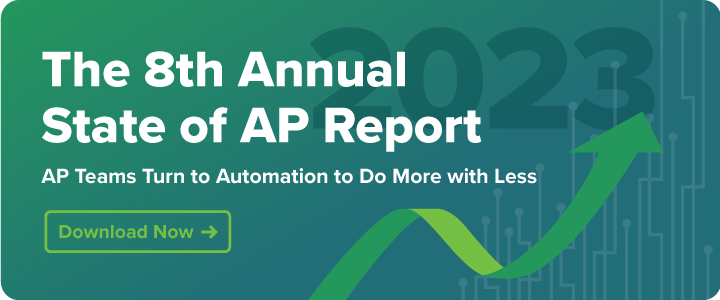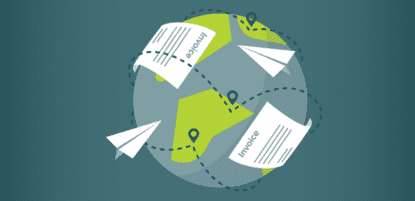Accounts payable forecasting is a lot like gazing into a crystal ball — it enables businesses to predict and plan for upcoming financial obligations. By understanding how to forecast accounts payable accurately, organizations gain valuable insights into their data, which in return helps them make smarter financial decisions and avoid unforecasted expenses.
But accurately projecting accounts payable presents a number of challenges, most of which stem from the inability to access real-time data from manual processes or legacy technology solutions. However, by identifying the right accounts payable automation analytics tools and leveraging metrics like days payable outstanding (DPO), organizations can streamline their accounts payable processes to achieve more accurate projections.
What Is AP Forecasting?
Accounts payable forecasting refers to the process of calculating future financial obligations based on historical data, trends, and business forecasts. It involves analyzing past payment patterns, tracking vendor performance, and considering factors like upcoming expenses, changes in purchasing patterns, and business growth projections. As a result, accounts payable forecasting enables companies to anticipate cash outflows, optimize cash flow management, and make data-driven financial decisions.

How to Project Accounts Payable
Businesses need the right tools and techniques to forecast accounts payable accurately, and the good news is that modern tools are more accessible than ever. In particular, AP analytics tools are crucial in achieving precise forecasting. With all invoice data in a single location — and without the need to rely on manual processes — organizations can minimize the risk of duplicate and late payments.
DPO
In addition to accounts payable automation analytics tools, DPO is a critical component in forecasting. This metric measures the average number of days it takes a company to pay its vendors after receiving an invoice. By leveraging this formula, businesses can optimize their cash flow and increase the accuracy of projections. Organizations can calculate DPO with the following equation: Accounts Payable x Number of Days/Cost of Goods Sold (COGS) = DPO.
Obstacles in Accounts Payable Forecasting
A large part of understanding how to project accounts payable is discerning the various challenges that hinder accurate forecasting. Most of these challenges stem from legacy technology solutions and manual processes that many organizations still rely on. Common obstacles include:
A Lack of Insight Into the Process
Manual accounts payable processes make it challenging to review the current status of payments. Without real-time visibility into payment workflows, it becomes nearly impossible to track and analyze payment trends, identify potential bottlenecks, and make informed decisions. As a result, teams lack the ability to reliably project future expenses.
Duplicate Payments
Duplicate payments can throw off accounts payable projections and impact cash flow. Without robust systems in place to detect and prevent duplicates, businesses may overstate their payables, leading to inaccurate forecasts — and unnecessary financial strain.
Time Constraints
When processes are manual, it’s difficult for AP teams to shift to a more strategic role. By embracing AP automation tools, teams can reduce manual processes, so they can spend less time chasing payments and focus on leveraging data to drive better business decisions.
Creating a Process for More Accurate Accounts Payable Projections
Developing a streamlined process for accurate accounts payable projections is crucial in making the right financial decisions. By focusing on key areas that influence accounts payable projections, you can improve your forecasting accuracy and financial planning. Let’s take a closer look:
Capture Accurate Invoices
A fundamental step in achieving reliable accounts payable projections is the accurate capture of invoices. By digitizing and capturing invoices using automation solutions, manual data entry can be eliminated, minimizing errors and ensuring the integrity of data. AP automation platforms, like MineralTree, combine the power of OCR technology with human review. As a result, our solution achieves a 99.5% accuracy rating when capturing invoice data. Our system also records the line item data, allowing AP teams to splice information in new ways when analyzing their payables.
Use Data Upon Invoice Capture
By leveraging solutions that provide access to invoice data upon invoice capture, you can avoid data lag–i.e. waiting for charges to land in your organization’s enterprise resource planning (ERP) software. Use this data upfront to more accurately analyze past payment patterns, identify trends, and factor in variables like vendor performance and payment terms.
Reduce Late Payment Fees
Late payment fees can add up when you expand locations or acquire a company. These fees can significantly impact cash flow and distort accounts payable forecasts, which is why it’s important to lean on a reporting tool that offers access to a history of payments reports, accounts payable aging reports, and accounts payable trial balance reports.
Avoid Duplicate Payments
Duplicate payments rapidly add unexpected expenses to the balance sheet. But don’t fret, because duplicate payments are easily avoided with the right accounts payable automation tool. Automated solutions identify duplicate payments before they make their way to payment approval, which increases cash flow forecasting accuracy by minimizing duplicate payments before it’s too late.
Leverage Accounts Payable Analytics Tools
Manual reporting requires cumbersome processes. But by taking advantage of accounts payable analytics tools, you can further enhance forecasting accuracy without spending hours on reporting. A platform that provides real-time access to reports, KPIs, and analytics unearths valuable insights into accounts payable data that help you analyze payment trends, identify areas for improvement, and make data-driven decisions that optimize forecasting.
The Advantages of Accurate Accounts Payable Forecasting
From improving cash flow to reducing financial risk, knowing how to forecast accounts payable with accuracy offers countless advantages to your business. These benefits include, but are not limited to:
Better Vendor Relationships
Vendor relationships continue to grow in importance, with 71% of companies noting their supplier relationships became more strategic over the past year. Accurate financial forecasting allows for better cash flow management, which enables timely payments to vendors. And by honoring payment commitments, you can foster stronger and more trustworthy relationships with suppliers — leading to preferential treatment, improved pricing, and enhanced collaboration.
Better Insights and Decisions
Accurate forecasting provides valuable insights into your financial obligations. By projecting future payables, you gain a clear understanding of your financial commitments, which helps you make more informed decisions regarding cash flow management, budgeting, payment term negotiations and resource allocation. Accurate forecasts also empower you to plan proactively, mitigate financial risks, and optimize your financial strategies.
Improved Cash Flow Management
Since accounts payable has a direct impact on cash flow, it’s important for companies to accurately forecast their expenses. As a result, companies can better manage their finances, so they can fulfill their obligations with vendors. Organizations can also use this data to better identify obstacles that may negatively affect business outcomes.
Using Analytics for Better Decision Making
Organizations across industries rely on MineralTree to enhance their accounts payable forecasting. One notable case involved employees at Simple Mills – leading provider of better-for-you crackers, cookies, snack bars, and baking mixes.
Simple Mills was able to leverage our AP analytics tool to easily view important metrics and KPIs. As a result, they were able to examine different business scenarios, such as extending payment terms, in an environment supported by data. “MineralTree Analytics has unlocked our AP data, so we can analyze annual spend, vendor terms, and the impact of early pay discounts on our cash flow,” said Maddy McGannon, Simple Mills’ Controller. “Supplier relationships and cash flow are both strategic priorities for us, and MineralTree Analytics helps us maintain a proactive and data-oriented approach at all times!”
Interested in learning more about how MineralTree can help your business streamline accounts payable processes and achieve accurate cash forecasts? Request a demo today.

Frequently Asked Questions
How do you forecast accounts payable using DPO?
To forecast accounts payable using DPO, calculate the average number of days it takes your company to pay its vendors after receiving an invoice. By analyzing historical DPO data and monitoring trends, and factoring in variables such as vendor performance and payment terms, you can project future accounts payable obligations more accurately.
Is a high or low DPO better?
There is no such thing as a good or bad DPO, since this should be based on a company’s business goals. A high DPO indicates that a company takes longer to pay its vendors, which can help improve cash flow by delaying outgoing payments. However, maintaining a high DPO should be balanced with maintaining positive vendor relationships. A low DPO means quicker payments, which can enhance vendor relationships but may impact cash flow management. The optimal DPO depends on the specific needs and financial circumstances of each business, and this may shift over time.



